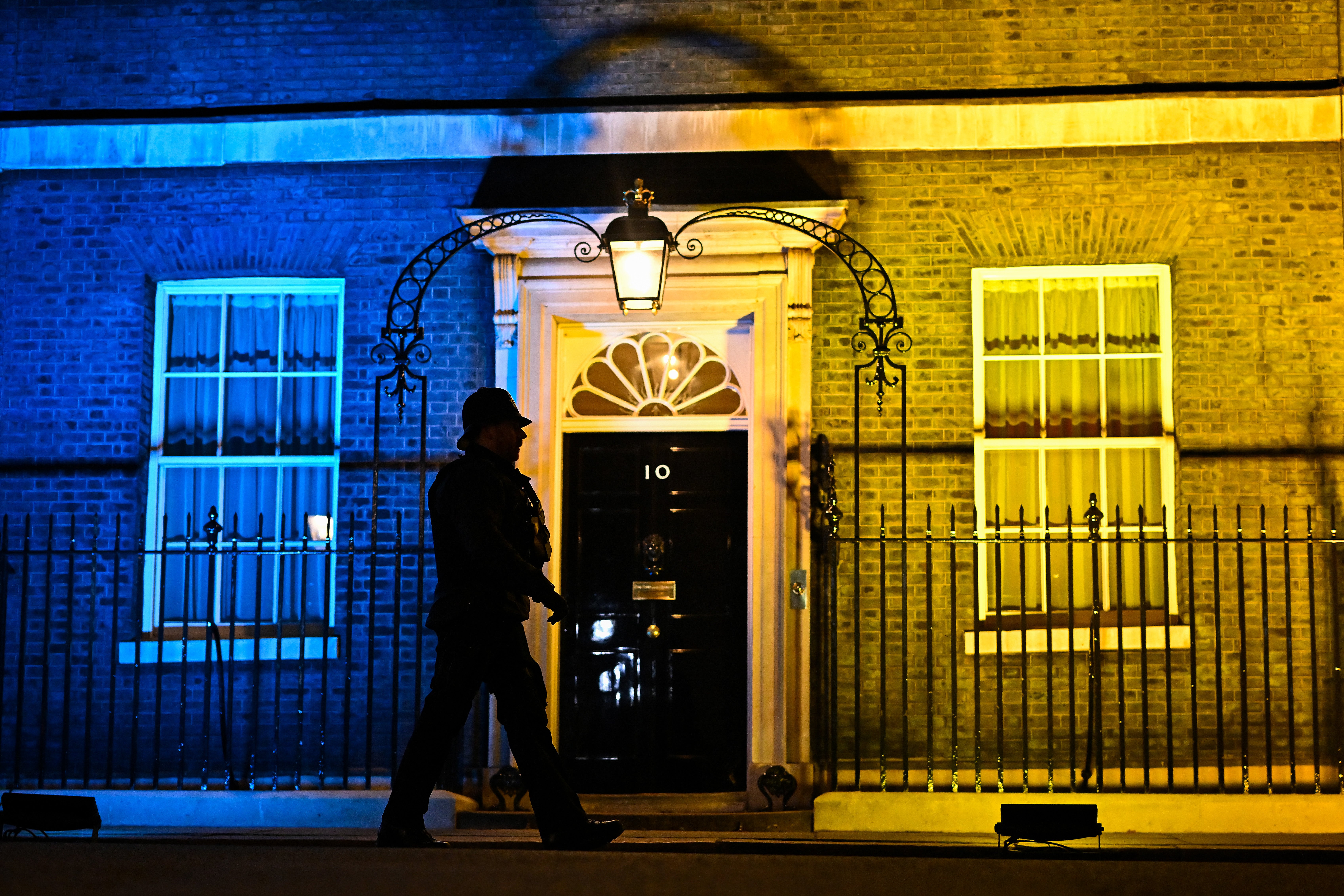Government buildings fly Ukrainian flag in mark of solidarity
Blue and yellow colours as symbol of Ukrainian nationhood were banned under Soviet rule

Your support helps us to tell the story
From reproductive rights to climate change to Big Tech, The Independent is on the ground when the story is developing. Whether it's investigating the financials of Elon Musk's pro-Trump PAC or producing our latest documentary, 'The A Word', which shines a light on the American women fighting for reproductive rights, we know how important it is to parse out the facts from the messaging.
At such a critical moment in US history, we need reporters on the ground. Your donation allows us to keep sending journalists to speak to both sides of the story.
The Independent is trusted by Americans across the entire political spectrum. And unlike many other quality news outlets, we choose not to lock Americans out of our reporting and analysis with paywalls. We believe quality journalism should be available to everyone, paid for by those who can afford it.
Your support makes all the difference.Government buildings in London have been flying the Ukrainian flag in a symbol of solidarity following the invasion of the country by Vladimir Putin’s Russian army.
The distinctive pale blue and yellow colours fluttered above famous locations ranging from 10 Downing Street to the Thames-side HQ of secret intelligence service MI6 from Thursday evening.
And both of these venues were lit up with the Ukrainian national colours last night.
Boris Johnson’s official spokesperson said the move was an “expression of solidarity” with the people of Ukraine.
The Home Office also shared a photo of the flag flying over its Whitehall HQ on Friday. “Today we’re flying Ukraine’s flag in support of the Ukrainian people, including those here in the UK,” said the department.
The flag of Ukraine was also raised outside the Scottish Government’s HQ at St Andrew’s House, Edinburgh.
The combination of blue and yellow as a symbol of the Ukrainian homeland stems from the 12th century flag of the kingdom of Galicia-Volhynia.
It has been used as a national flag since 1848, when it was raised above the town hall of Lviv, then part of the Austro-Hungarian Empire.
The bicolour flag was officially adopted as a state flag for the first time in 1918 by the short-lived Ukrainian People’s Republic, but was outlawed under the Soviet Union.
It was officially restored as the national flag in 1992 following Ukrainian independence.
Many landmarks around the world have been lighting up in Ukraine’s colours to show their solidarity with the country.
The Colosseum in the Italian capital Rome and the Brandenburg Gate in Berlin were illuminated with yellow and blue.
Join our commenting forum
Join thought-provoking conversations, follow other Independent readers and see their replies
Comments